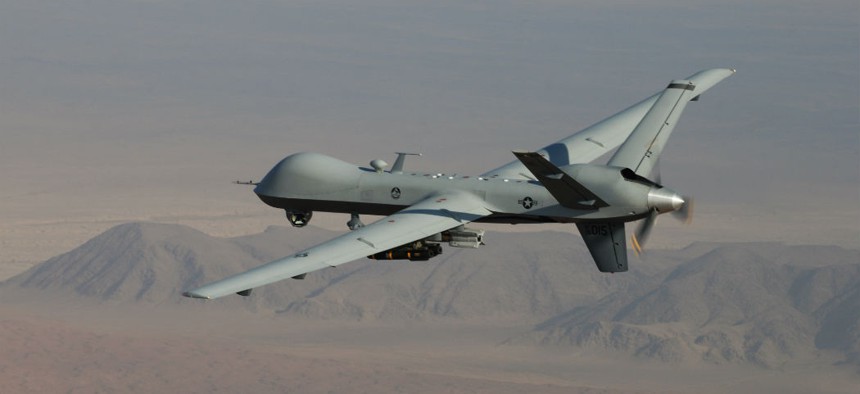Air Force 3-star: “algorithmic warfare” needed for future ISR, combat ops
Artificial intelligence and human-machine warfare will increasingly be vital for Air Force ISR operations as a way to keep pace with the speed and scale of information technology.
Air Force leaders anticipate that fast increasing amounts of AI and human-machine interface will be needed to successfully wage “algorithmic warfare” and process ISR data to stay ahead of technologically advanced adversaries.
There is a growing need to identify combat-relevant information amidst quickly growing volumes of data, drone video feeds and sensor information.
Citing a significant need for faster and more efficient processing, exploitation and dissemination (PED) of Full-Motion Video (FMV) technology, the Air Force 3-star in charge of ISR operations said human-machine interface can help identify and process information at the speed and scale necessary to keep pace with emerging threats and digital age technological progress.
“It is not sustainable to throw more widgets, platforms and sensors at problems. We have to look at human-machine teaming so that computers can access data, secure data and transport data. This will allow us to get back to the heart of what we do – analysis and decision making,” said Lt. Gen. VeraLinn Jamieson, Deputy Chief of Staff for Intelligence, Surveillance, and Reconnaissance at Headquarters U.S. Air Force, who spoke at the 2017 Air Force Information Technology & Cyberpower Conference, Montgomery, Ala.
Jamieson said military and commercial innovations can accelerate what former Deputy Defense Secretary Bob Work identified as “algorithmic warfare.” The effort, referred to as Project Maven, is designed to develop new computer algorithms able to identify relevant ISR data such as combat relevant incidents, movements or objects, Jamieson explained.
Instead of relying upon vast numbers of human ISR professionals to track and characterize FMV, computer technology can quickly perform relevant PED missions to rapidly give human commanders information needed to make combat decisions.
The general consensus among AI experts is to regard fast-evolving computer processing speeds as better equipped to gather information and perform procedural functions – while still relying upon human cognition to solve problems, analyze emerging variables and make critical decisions.
“We are not going to relinquish control. We will partner with machines,” Jamieson said. “We need to make sure that our decision makers at the tactical level actually receive the right information at the right time.”




